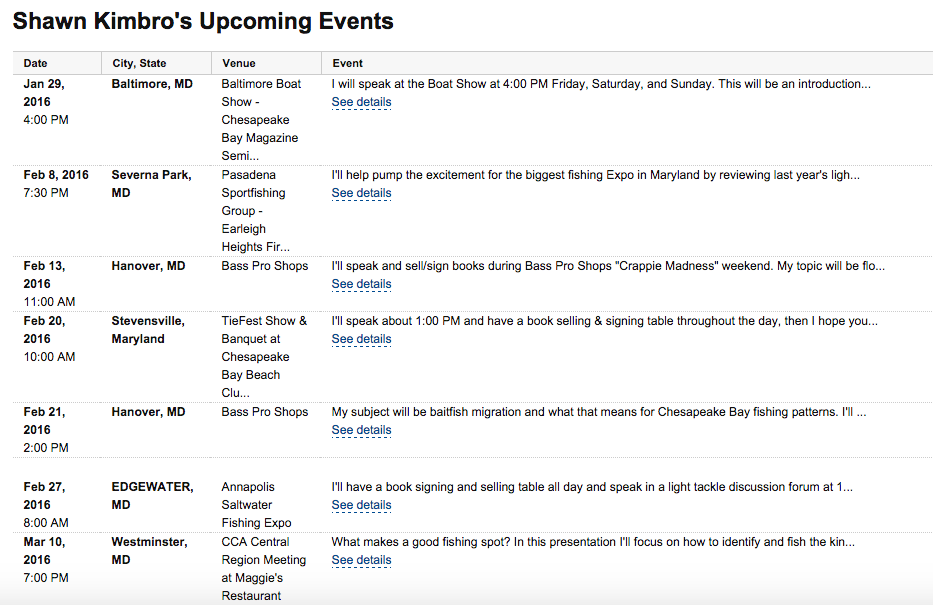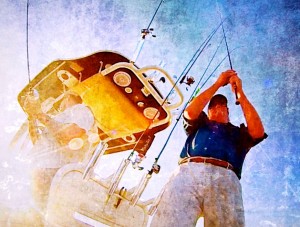video
Like it or not, we live in an age of short attention spans. How many times have you started into a video or blog post that sounded interesting, only to abandon it after the first few seconds because it was just too long and drawn out? I have to admit that, before I open any video on social media, I look to see how much of a time investment I’ll need to make. It’s especially true with instructional videos. When I turn to YouTube or Facebook to find out how something works, I want to see content that is quick and to the point.
That’s why I’m introducing my new short video series, The Chesapeake Minute. It’s a series of instructional vignettes about light tackle fishing that get right to the point. Most entries will be 60 seconds or less and I’ll never go over two minutes. Look for entries about angling techniques, lure selections, gear choices, hot locations, fishing reports, and other light tackle related advice designed to help you quickly maximize your success on the water.
Most of the videos will be season specific, but I’ll also throw out some tips that work any time of year. I pledge at least 36 episodes in 2020 and there will likely be many more. A new entry will drop every Thursday afternoon at 3:00 PM with bonus editions coming out at other times through the week.
I’ll announce some of the entries on social media, but you can follow my YouTube Channel to make sure you don’t miss an episode. The Chesapeake Minute Playlist is fully indexed and searchable so you can easily find any subject you’re interested in. They’ll be easy to find on YouTube Search and Google Search as well. Just type my name and the fishing subject in the search box.
A few videos are already live and look for more over the next couple of weeks since my goal at first is to cover most of the light tackle fishing basics. I’m also open for suggestions, so fire away. I’ll still post some full-length videos from time to time, but I hope you’ll push the PLAY button and give my new series a look. It only takes a minute!
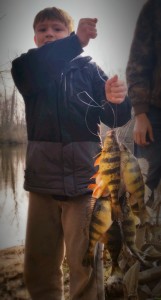 Spring is nature’s way of saying, “Let’s Party!” That’s how the late Robin Williams described it. March may have roared in like a lion, but she’s now lying like a lamb with weeks of warmer weather in the forecast. While the calendar might still say winter, spring, glorious spring has made her eloquent arrival to the snow-weary Mid-Atlantic. The peepers are peeping, the red buds are budding, and yesterday, through the morning fog, I caught a glimpse of an osprey soaring high above Kent Island. There are a lot of reasons why fishermen look forward to the arrival of spring. A big one is the beginning of Daylight Saving Time on March 13 when clocks spring forward to give us one more treasured after-work fishing hour. Another reason is that there are lots of fish around that are relatively easy to catch. Fishing and spring go together like, well like fish and fries.
Spring is nature’s way of saying, “Let’s Party!” That’s how the late Robin Williams described it. March may have roared in like a lion, but she’s now lying like a lamb with weeks of warmer weather in the forecast. While the calendar might still say winter, spring, glorious spring has made her eloquent arrival to the snow-weary Mid-Atlantic. The peepers are peeping, the red buds are budding, and yesterday, through the morning fog, I caught a glimpse of an osprey soaring high above Kent Island. There are a lot of reasons why fishermen look forward to the arrival of spring. A big one is the beginning of Daylight Saving Time on March 13 when clocks spring forward to give us one more treasured after-work fishing hour. Another reason is that there are lots of fish around that are relatively easy to catch. Fishing and spring go together like, well like fish and fries.
Have you noticed how all the fast food restaurants put their fish sandwiches on sale this time of year? I believe humans are hard-wired to crave fish in the spring. It’s been right there in our DNA since the first hunter-gatherers wandered away from their warm winter hearths to find springtime streams teeming with spawning fish. For many fishermen, the urge is so strong it’s nearly impossible to stay away from the water in March and April. This is the time of year when fish are easiest to catch, and the time when we most want to eat them.
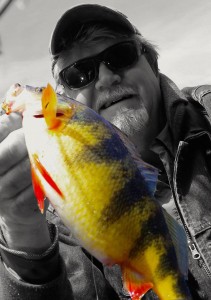 I’m not one to turn down the bounty of fresh fish. While I release many of the fish I catch, I can’t resist bringing home an occasional stringer for the table. I’m a big fan of eating locally produced fruits, meats, and vegetables. We get our honey from local hives, our beef from a nearby herd, and many of our vegetables from our garden. Since we live on an island in the Chesapeake Bay, it just comes naturally to eat fish from the waters around us. Unfortunately, those waters are very polluted, so there are strict consumption advisories about fish caught in this area. In fact, officials in Washington DC recently advised no consumption of rockfish caught in the District. I will no longer serve my family striped bass over 30 inches long from anywhere in the Bay because of the build up of toxins. It’s a personal decision, but one that I’m serious about. My children and grandchildren aren’t old enough to make choices for themselves about what is healthy. They’re too young for me to take a chance on poisoning them. Read More!
I’m not one to turn down the bounty of fresh fish. While I release many of the fish I catch, I can’t resist bringing home an occasional stringer for the table. I’m a big fan of eating locally produced fruits, meats, and vegetables. We get our honey from local hives, our beef from a nearby herd, and many of our vegetables from our garden. Since we live on an island in the Chesapeake Bay, it just comes naturally to eat fish from the waters around us. Unfortunately, those waters are very polluted, so there are strict consumption advisories about fish caught in this area. In fact, officials in Washington DC recently advised no consumption of rockfish caught in the District. I will no longer serve my family striped bass over 30 inches long from anywhere in the Bay because of the build up of toxins. It’s a personal decision, but one that I’m serious about. My children and grandchildren aren’t old enough to make choices for themselves about what is healthy. They’re too young for me to take a chance on poisoning them. Read More!
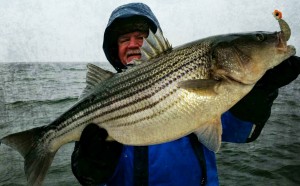 Jamie Clough, Rich Jenkins, and I joined Phil Kirchner for a run south out of Hoopersville recently. The weather hasn’t been great lately, but we’ve been catching some nice fish down around the mouth of the Potomac River. The forecast of light winds and snow flurries had us looking forward to a nice smooth ride and the opportunity to find lots of fish. Neither of those things happened! Instead, the Delmarva Pennisula and Southern Maryland were hit with one to three inches of snow and twenty-mile-an-hour winds gusting to thirty. Let’s just say the ride back was a little wet and sporty. Click the photo for the video and you’ll see what I mean.
Jamie Clough, Rich Jenkins, and I joined Phil Kirchner for a run south out of Hoopersville recently. The weather hasn’t been great lately, but we’ve been catching some nice fish down around the mouth of the Potomac River. The forecast of light winds and snow flurries had us looking forward to a nice smooth ride and the opportunity to find lots of fish. Neither of those things happened! Instead, the Delmarva Pennisula and Southern Maryland were hit with one to three inches of snow and twenty-mile-an-hour winds gusting to thirty. Let’s just say the ride back was a little wet and sporty. Click the photo for the video and you’ll see what I mean.
 Below is my speaking schedule for the next few months. We were happy to see one of the biggest audiences ever for my talk last weekend at the Frederick Fishing Expo. There are several more coming up so I hope you can make it. Most of my talks this winter will summarize my top-ten tips for trophy striper fishing. I’ll also break down float-and-fly crappie fishing at the Bass Pro Shops talk and the following weekend I’ll explain bait migrations in the Chesapeake and what that means for light tackle anglers. Also, I’m stoked to be on the same speaking schedule as Lefty Kreh and Bob Popovics at this years Fly & Light Tackle Fest. This year it’s at the Chesapeake Bay Beach Club just beneath the Bay Bridge on Kent Island. There’s more information about these fun events on my Amazon Author’s Page and I’ll keep you posted here and on Facebook and Twitter. I hope to see you at any or all or better yet, out there on the water!
Below is my speaking schedule for the next few months. We were happy to see one of the biggest audiences ever for my talk last weekend at the Frederick Fishing Expo. There are several more coming up so I hope you can make it. Most of my talks this winter will summarize my top-ten tips for trophy striper fishing. I’ll also break down float-and-fly crappie fishing at the Bass Pro Shops talk and the following weekend I’ll explain bait migrations in the Chesapeake and what that means for light tackle anglers. Also, I’m stoked to be on the same speaking schedule as Lefty Kreh and Bob Popovics at this years Fly & Light Tackle Fest. This year it’s at the Chesapeake Bay Beach Club just beneath the Bay Bridge on Kent Island. There’s more information about these fun events on my Amazon Author’s Page and I’ll keep you posted here and on Facebook and Twitter. I hope to see you at any or all or better yet, out there on the water!
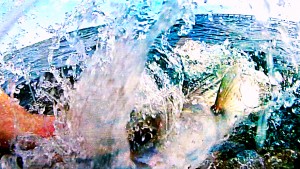 If you haven’t already, subscribe to my YouTube channel to get my latest videos. Also don’t forget, a lot of my recent Internet activity has been via social networks, especially Facebook (@Shawn.Kimbro), Twitter (@ShawnKimbro) and Instagram (@Shawn_Kimbro). It’s very easy to get a message out via these outlets and I can very quickly post fishing pictures and short reports. If you haven’t already, please look me up! Here are some recent videos.
If you haven’t already, subscribe to my YouTube channel to get my latest videos. Also don’t forget, a lot of my recent Internet activity has been via social networks, especially Facebook (@Shawn.Kimbro), Twitter (@ShawnKimbro) and Instagram (@Shawn_Kimbro). It’s very easy to get a message out via these outlets and I can very quickly post fishing pictures and short reports. If you haven’t already, please look me up! Here are some recent videos.
https://www.youtube.com/watch?v=ENQ9HnR1zP0
“Swish!”
“What’s that sound?” I kept fishing, pretending not to notice the conversation in the back of the boat. Hank DiNardo had been nice enough to invite me out on his Southport 28TE to fish Eastern Bay. I hadn’t fished with Hank before and he wasn’t familiar with my quick-snap style of jigging. The fish finder told us there was fish around the boat, but they weren’t biting. I was up on the bow using every strike trigger I knew, including snapping my jig for all I was worth.
From the back I heard my regular fishing partner, Jamie Clough explaining, “That’s just the way Kimbro jigs sometimes.”
Indeed. That was seven years ago and since then I’ve earned something of a reputation for my energetic, somewhat spastic jigging style. When fishing is tough, you’ll frequently hear my rod tip cutting through the air as I snap my soft plastic jigs off the bottom. It’s a technique that’s been both mocked and revered with the biggest detractors being a couple of local guys who thought they already had it all figured out and the strongest proponents being newcomers to the Chesapeake Bay light tackle game who just want to catch more fish.
Why snap jigging? Read More!
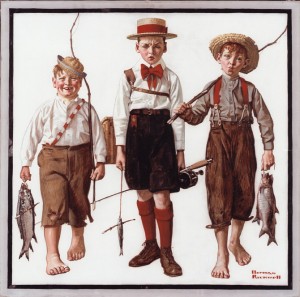 Been fishing lately? If you have, I bet you’ve noticed that there are a lot of suspended fish this time of year. There’s nothing more frustrating to Chesapeake Bay light tackle fishermen than to see nice marks on the fish finder, then not get bites. How do you catch those finicky suspended rockfish? Frankly, it’s tough, but there are some things you can do to increase your chances. To start, consider what’s going on below the surface.
Been fishing lately? If you have, I bet you’ve noticed that there are a lot of suspended fish this time of year. There’s nothing more frustrating to Chesapeake Bay light tackle fishermen than to see nice marks on the fish finder, then not get bites. How do you catch those finicky suspended rockfish? Frankly, it’s tough, but there are some things you can do to increase your chances. To start, consider what’s going on below the surface.
1. Scope Out The Situation – Stripers adjust their feeding habits depending on conditions. Since the Chesapeake Bay is an estuary, conditions can change frequently. Sometimes changes are short-term like those brought on by tides and currents. Sometimes, they last longer like with seasonal water-temperature adjustments. There are even cases where conditions can change for years at a time.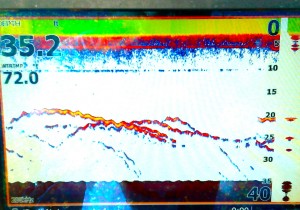
In the near-decade that I’ve been fishing the Chesapeake, I’ve noticed a change, particularly in the warmer months, to more fish feeding in temperate mid-level zones in open water. This can happen when the water conditions on the surface are not as comfortable as they are farther down. In the spring when we get a lot of rain, storm water runs off polluted roads, parking lots, fertilized lawns, and farmer’s fields resulting in a surface layer of unsalted, polluted water. Stripers will come up to feed in this layer when conditions are good and when they’re very hungry, but they’ll drop back down into the comfort zone when they aren’t extremely active. They usually won’t swim down deeper than forty feet or so because the water down deep may not hold enough oxygen, or the temperature or salinity can be uncomfortable for them. Read More!



